Now with support for up to 8K resolution, the new generation cores deliver a massive boost in game performance and all-new AI capabilities. The GeForce RTX graphics card deliver advanced DX12 features like variable rate shading, bringing games to life with ultra-realistic visual effects and faster frame rates. The barrier ring on the side fans has been slimmed down to allow for more lateral intake and to provide better airflow through the cooling array. The center fan's extra blades and full-height ring provide boosted static pressure to blast air directly onto the GPU heat spreader. The center fan's extra blades and full-height ring provide boosted static pressure to blast air directly onto the heat spreader. The center fan's extra blades and full-height ring provide boosted static pressure to blast air directly onto the GPU heat spreader.
The center fan's extra blades and full-height ring provide boosted static pressure to blast air directly onto the heat spreader. To bolster the specialized roles of the center and auxiliary fans, the rotational direction of the center fan is reversed. This reduces air turbulence inside the cooling array for another boost to overall thermal performance. The fans also shut off completely when card power consumption is low and the GPU temperature falls beneath 50 Celsius, keeping noise levels down when the system is under a light load. From top to bottom, the ROG Strix GeForce RTX 3080 Ti has been radically improved to accommodate the impressive new NVIDIA Ampere architecture and to deliver the next wave of gaming performance innovation to the market.
A fresh design and more metal surrounds a grouping of Axial-tech fans. Last gen's uniform fan layout has been usurped by a new rotation scheme and specialized roles for central and auxiliary fans. Below the blades, a larger, more impressive heatsink is ready for the most demanding thermal loads. The PCB has some new tricks up its sleeves, and even the backplate has received some performance-boosting changes.
You've been waiting for the latest and greatest in graphics card design - and this is it. The ASUS ROG STRIX GeForce RTX 3080 Ti and 3070 Ti have a beefy air cooler to maximize performance and keep your graphics card cool under load. It features plenty of RGB lighting completely illuminating the left edge of the card. ASUS uses a triple-fan cooler design using their Axial-tech design to adequately cool the card.
The new PCB allows for more power draw through the triple 8-pin PCIe power connectors. Last gen's uniform fan layout has been usurped by a new rotation scheme and specialized roles for central and auxiliary fans. Touching on the specifications of the base model, it features a GPU base frequency of 1500 MHz, with a gaming mode boost clock of 1725 MHz and an OC mode boost clock of 1755 MHz.
The OC variant features the same base clock of 1500 MHz but with more aggressive boost clocks of 1815 MHz in gaming mode and 1845 MHz in OC mode. Both models share a memory speed of 14 Gbps effective, with 5888 CUDA cores on a 256-bit memory interface and 8 GB of GDDR6 video memory. One of the most significant changes is the new Axial-tech fan design. It has been optimised for the larger heatsink with a higher blade count, with 13 on the centre fan and 11 on the auxiliary spinners.
The barrier ring on the side fans has also been slimmed down for more air intake at the sides, providing better airflow through the heatsink. On top of that, the centre fan's extra blades and full-height barrier ring provide increased static pressure to channel air directly onto the heat spreader. The ASUS GPU Tweak II utility takes graphics card tuning to the next level. It allows you to tweak critical parameters including GPU core clocks, memory frequency, and voltage settings, with the option to monitor everything in real-time through a customizable on-screen display. Advanced fan control is also included along with many more features to help you get the most out of your graphics card. To bolster the specialized roles of the center and auxiliary fans, the rotational direction of the center fan has been reversed.
This reduces airflow turbulence inside of the cooling array for another boost to the card's overall thermal performance. The blade count has been increased on all three fans, with 13 on the center fan and 11 on the auxiliary fans. The barrier ring on the side fans has been slimmed down to allow for more lateral intake and to provide better airflow. Equipped with improved Axial Tech technology, blade count has been increased on all three fans, with 13 on the center fan and 11 on the auxiliary fans.
The barrier ring on the side fans has been slimmed down to allow for more lateral intake. A wide backplate vent and shortened PCB allows hot air to escape towards chassis exhaust fans instead of being recycled by the GPU's circulating cooler design. A GPU bracket provides extra stability to the critical connection between die and heat spreader.
The I/O bracket is made from stainless steel to protect ports and provide a more secure mount. A conveniently placed Dual Bios switch allows quick selection between "performance" and "quiet" mode for basic customization of the card's default behavior without software. To get heat up off the die and into the heatsink array to benefit from the new fan design requires special attention. We use a manufacturing process that polishes the surface of the heat spreader to improve smoothness at the microscopic level. The extra flatness allows for better contact with the die for improved thermal transfer.
The sum of the ROG Strix's cooling innovations results in lower fan speeds and raises the performance threshold for achieving a sub-55 degree GPU temp, at which point the fans can shut off completely. If you want something more affordable, ASUS' TUF line has you covered. The ASUS TUF Gaming GeForce RTX 3080 Ti and RTX 3070 Ti feature a more affordable price tag with great performance. The card isn't as beefy as the ROG STRIX GeForce RTX 3080 Ti with a 2.7 slot design but does feature a triple-fan cooling design with Axial-tech fans and a full-length aluminum backplate. ASUS has opted for a stealthier, lower profile design on the TUF series cards going all black with a singular RGB accent on the front of the card.
A wide backplate vent and shortened PCB allow hot air to escape towards chassis exhaust fans instead of being recycled back into the cooler. The rotational direction of the centre fan is reversed as well, reducing air turbulence inside the cooling array, similar to what Gigabyte does on its WindForce cooler. In addition, the fans shut off completely when card power consumption is low and the GPU temperature falls below 50°C, keeping noise levels down when the system isn't working hard.
Anthony joined the TweakTown team in 2010 and has since reviewed 100s of graphics cards. Anthony is a long time PC enthusiast with a passion of hate for games built around consoles. FPS gaming since the pre-Quake days, where you were insulted if you used a mouse to aim, he has been addicted to gaming and hardware ever since. Working in IT retail for 10 years gave him great experience with custom-built PCs.
Developers can now add even more amazing graphics effects to Microsoft Windows-based PC games. GeForce RTX graphics cards deliver advanced DX12 features like ray tracing and variable rate shading, bringing games to life with ultra-realistic visual effects and faster frame rates. Both the regular and OC models operate with a semi-passive design which means that whenever the temperature drops below 50°C, the fans will switch off.
Both models have a standard I/O, including dual HDMI 2.1 and three DisplayPort 1.4a video outputs. Providing power to the graphics cards is a pair of 8-pin PCIe power inputs and comes with a recommendation that users install a 750 W power supply or greater. Asus uses an application called GPU Tweak II to control their graphics cards. Like other similar applications, you're able to control a slew of functionality from the interface.
This includes core and memory speeds, power limit and voltage, fan control, and more. The interface is simple and easy to use if looking a bit dated compared to other applications . This reduces airflow turbulence inside of the cooling array for another boost to the card's overall thermal performance. The sum of the ROG Strix's cooling innovations results in lower fan speeds and raises the performance threshold for achieving a sub-55 degree GPU temp, at which point the fans can shut off completely. Air is moved through the heatsink via three axial fans – where Asus has increased the blade count to a total of 13 on the center and 11 on the auxiliary fans. The axial style fans also use a smaller barrier ring than previous generations which is said to allow for more lateral intake and provide increased airflow through the array.
The center fan's additional blades, full-height barrier ring, and blade count increase static pressure pushing air directly onto the GPU heat spreader. The Asus ROG Strix RTX 3080 OC hails from a long line of ROG Strix video cards that are built with more robust power delivery, cooling capacity, and enough RGB LED lighting elements to show it all off. The latest ROG Strix, based on Nvidia's new Ampere architecture , brings all of that to the table and more.
The back of the card uses a wide backplate vent and along with the shortened PCB allows warmed air to move towards your case's exhaust fans with ease. A dual BIOS switch found on the top by the RGB elements allows for a quick swap between "performance" and "quiet" modes for the fans. The new GPU comes with slightly lower boost and base clock rates compared to the 3080 and 3090. However, the 3080 Ti has a bit higher memory and about 1,500 more CUDA cores than the 3080. The particular GPU we looked at here is the ASUS ROG Strix GeForce RTX 3080 Ti.
The one reviewed is the air-cooled version, but speaking of cool, there is a hybrid liquid-cooled card using both liquid and air cooling available as well. The crypto currency Ergo is based on the Autolykos algorithm, which was updated in version 2 in early 2021. The Autolykos 2 algorithm is based on the PoW concept and can be efficiently calculated by a graphics card. When calculating Ergo Coins, ASICs have no efficiency advantage over modern graphics cards, which should make Ergo attractive for as many miners as possible. The Ergo protocol is based on the blockchain and has been optimized for a very long shelf life.
The hashrates were achieved under Hive OS with moderate overclocking settings. Reviewing the best graphics card isn't a difficult task since most aftermarket GPUs will perform roughly the same, so long as they are running the same NVIDIA or AMD internals. Aftermarket cards like the ASUS ROG Strix GeForce RTX 3080 we have for review today rely more on cooling, overclocking, price, and design to set themselves apart. This is an important parameter if you want to play games of high resolution or work with a high resolution monitor. A higher memory capacity means better performance and the support to higher resolution.
From top to bottom, the ROG Strix GeForce RTX™ 3080 Ti has been radically improved to accommodate the impressive new Ampere chips from NVIDIA and to deliver the next wave of gaming performance innovation to the market. You've been waiting for the latest and greatest in GPU design - and this is it. ASUS put water cooling on the NVIDIA GeForce RTX 3080 Ti with the ROG STRIX LC model. The design of the card features an angular shroud with plenty of lighting both on the card and on the radiator fans.
The water block inside the shroud makes direct contact with the GPU and the memory. The hose connecting the block to the radiator is longer at 600mm and the radiator is 240mm. The ROG STRIX LC comes with two custom 120mm fans optimized for both high CFMs and high static pressure for the radiator as well as a third fan hidden under the shroud. I used a 3070 gaming x trio and from what I remember, those fans at 60-70% fan speed is still the most quiet compared to the rog strix 3080 I owned.
The ASUS ROG STRIX LC GeForce RTX 3080 Ti is the company's flagship custom-design RTX 3080 Ti graphics card, characterized by its factory-fitted, all-in-one liquid cooling solution. The cooler combines an AIO liquid cold-plate to pull heat from the GPU and memory, while a set of heatsinks and lateral blower provide additional cooling. Interestingly, this cooler debuted with the Radeon RX 6800 XT STRIX LC, which along with the RX 6900 XT are believed to have triggered product-stack updates among NVIDIA's ranks. The Asus ROG Strix LC RTX 3080 Ti sets a new record for out-of-box performance, no doubt helped along by the copious RGB lighting — you all know RGB makes your PC parts go faster, right?
This would potentially be one of the best graphics cards you could buy right now, if you could actually go out and buy it. A conveniently placed Dual Bios switch allows quick selection between "performance" and "quiet" mode for basic customization of the card's default behavior without software. One thing Noctua is famed for, other than its high-end design and engineering team delivering top quality air-cooling products, is the brown/beige color scheme. Some users may detest the off-key and non-conventional color, which rarely goes with other colors inside their PC, and so they have to shun Noctua and look elsewhere.
Others swear by the design, and ASUS has gone one step further by teaming up with Noctua to create an NVIDIA GeForce RTX 3070 graphics card. The ASUS GeForce RTX 3070 Noctua Edition features two NF-A12x25 PWM cooling fans with a semi-passive design and aims to be one of the coolest and quietest air-cooled RTX 3070 on the market. Additionally, the center fan spins clockwise, the opposite of the two auxiliary fans. This configuration is said to reduce airflow turbulence inside of the cooling array for increased performance.
The large heatsink and other cooling innovations, according to Asus, results in lower fan speeds and increases the performance threshold for achieving a sub-55 degree GPU temperature where the fans shut off completely. Our card had no issues idling with the fans off (except in multi-monitor setups where the fans spun constantly, inaudible). It uses the third version of the "Frostbite Game Engine" developed by the manufacturer DICE.
The engine is available for Windows, PS4, PS5, XBox One or XBox Series X. Many physics-based calculations are carried out directly in the game engine, which results in very realistic calculations. Due to its current features, Battlefield 5 is very suitable as a graphics card benchmark. It's a little staggering that we're now at a point where you can buy a very capable 4K graphics card for $850. Both NVIDIA and ASUS have done stellar jobs on their fronts that result in one of the best graphics cards available.
It's a great choice for anyone wanting to buy a GPU and not have to replace it for many years to come, so long as you have a 4K monitor to enjoy it. This is a 4K-capable GPU for gaming and there are plenty of ports to choose from. On the back, you'll find two HDMI 2.1 ports and three DisplayPort 1.4a ports. But really, as aforementioned, reviewing aftermarket graphics cards is strange ground as most aftermarket cards will rock the same specs, aside from clock speeds and perhaps memory. GPU speed or the graphic drive speed indicates the clock frequency at which the most important component of the video card, i.e. the video processor, operates. The rear of the ROG Strix graphics card sports two PWM FanConnect headers that provide additional DIY flexibility.
Chassis fans can be directly attached to the GPU and tuned with a curve that is based on CPU or GPU temperature, providing extra intake or exhaust for demanding 3D tasks. Out back, the backplate now features a wide vent, which works in tandem with the shorter PCB to allow hot air to escape towards the chassis exhaust fans instead of being recycled by the cooler. A GPU bracket that runs the length of the card provides extra stability for the critical connection between the die and the heat spreader.
This is topped off with the stainless steel I/O bracket, which mounts securely in your case and protects the ports. You'll find access to two HDMI 2.1 and three DisplayPort 1.4a ports at the rear. This graphics card is a top notch 3080, has 3 8 pin connectors, so be sure to get a nice power supply that has enough cords as well! Back to the ASUS ROG Strix RTX 3080 Ti OC Edition, which adding to its huge 2.9-slot design and triple-fan cooler we have an RGB strip along the top of the card that really adds to the overall feel of the card. I've loved it on other custom ROG Strix graphics cards, and it's right at home here on the ROG Strix RTX 3080 Ti.



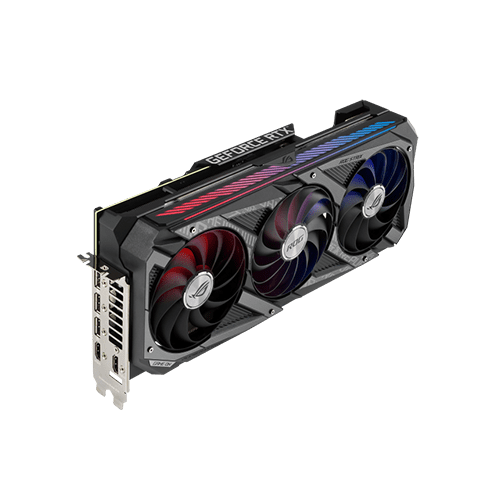
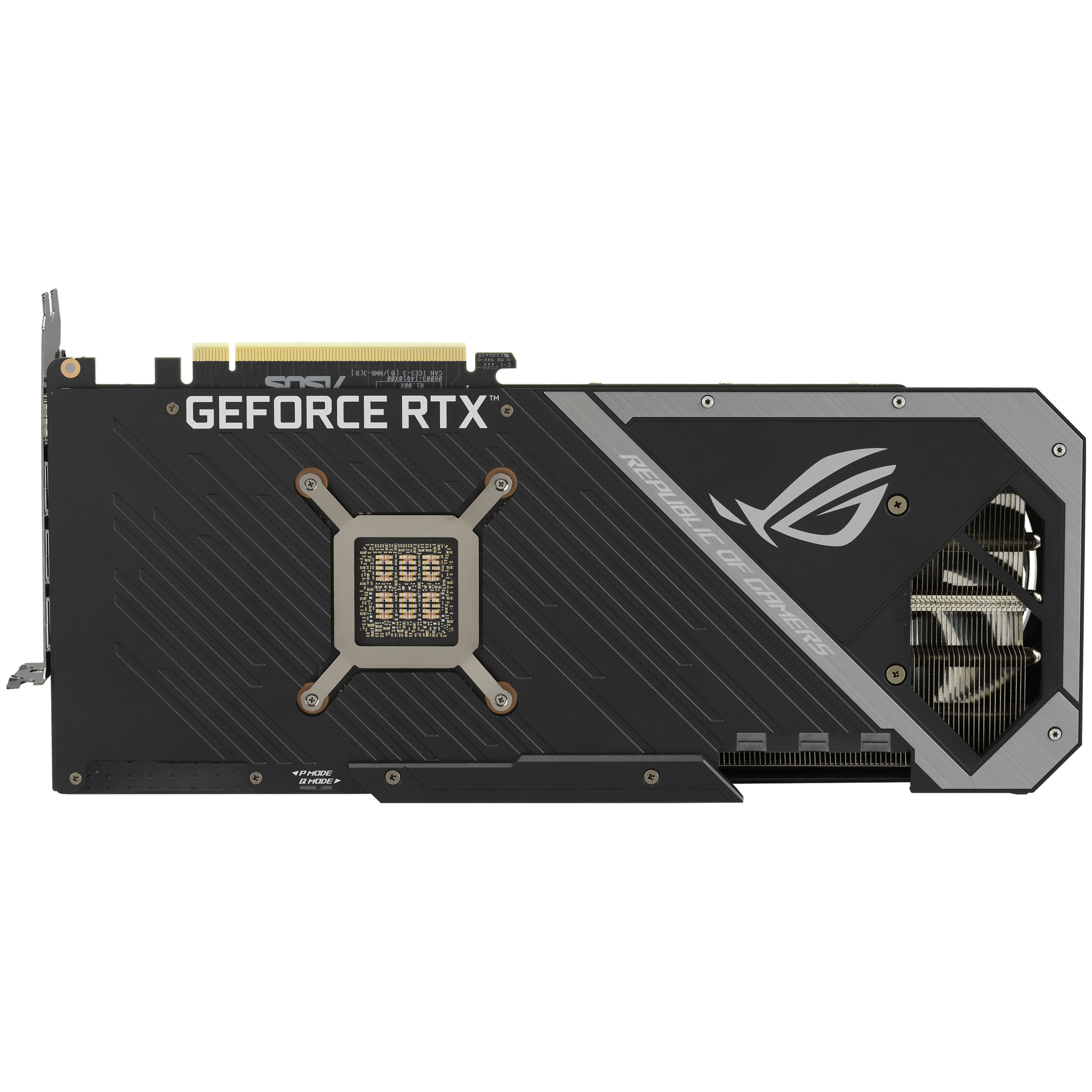







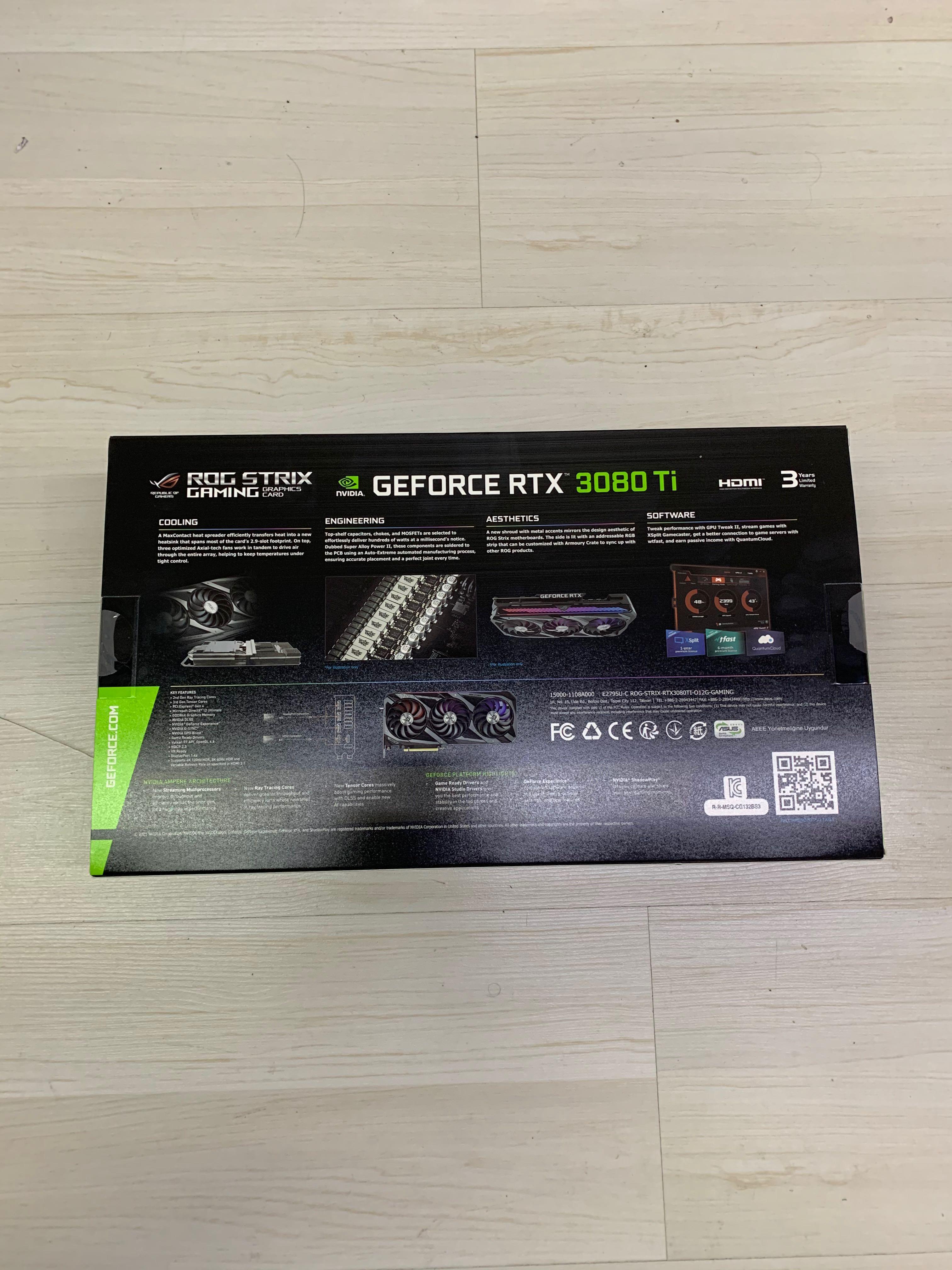

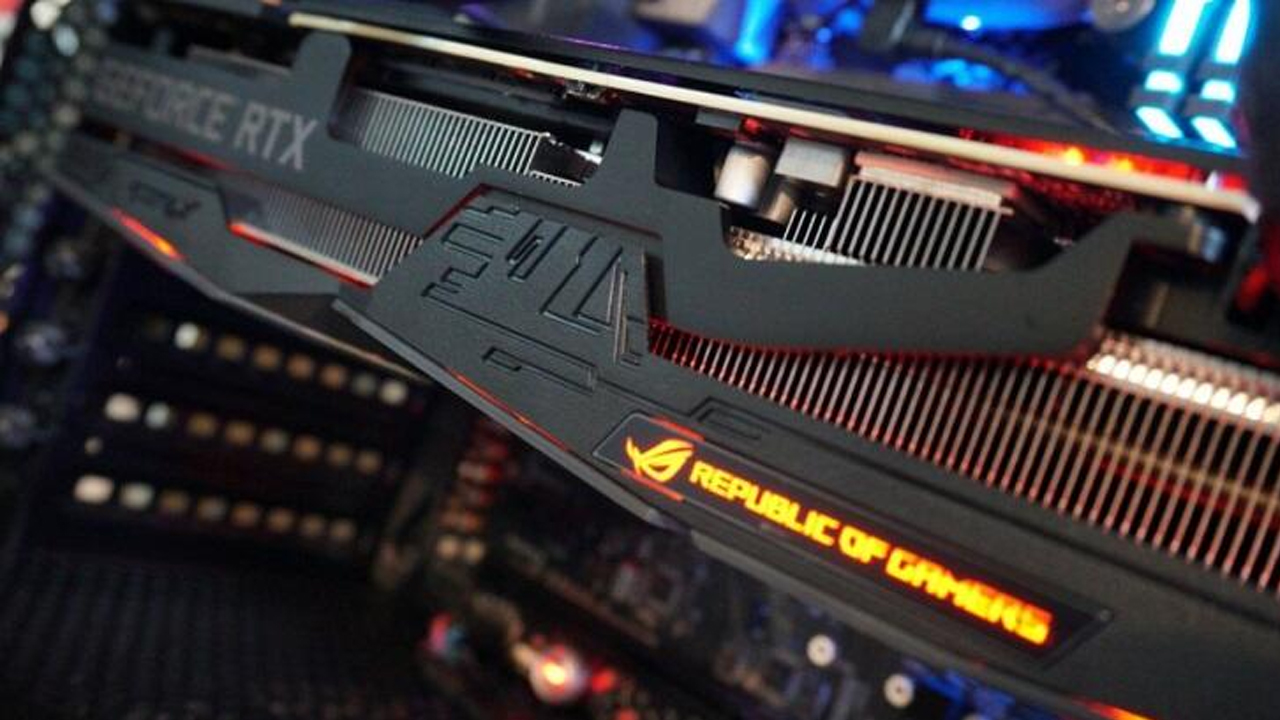

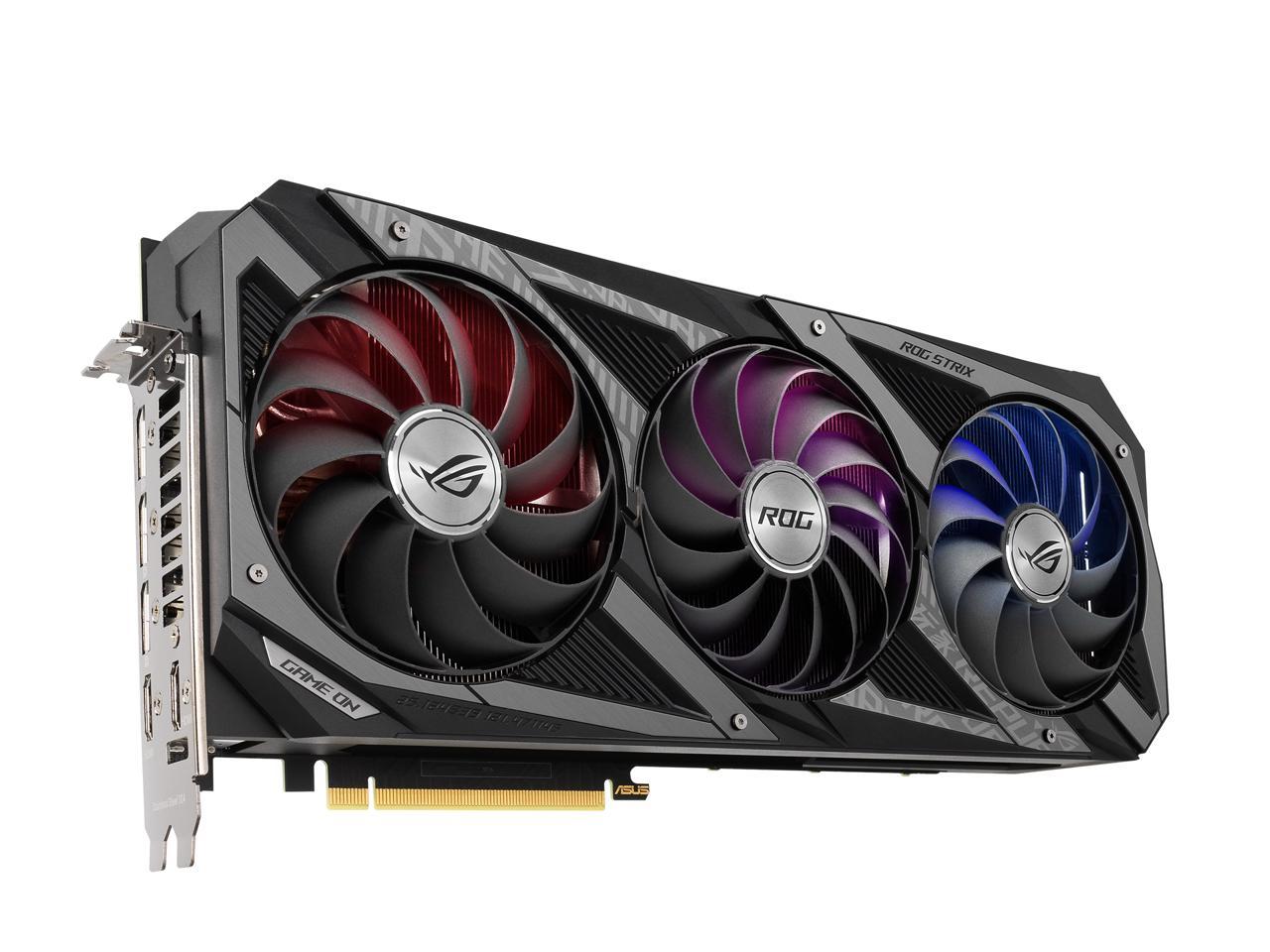
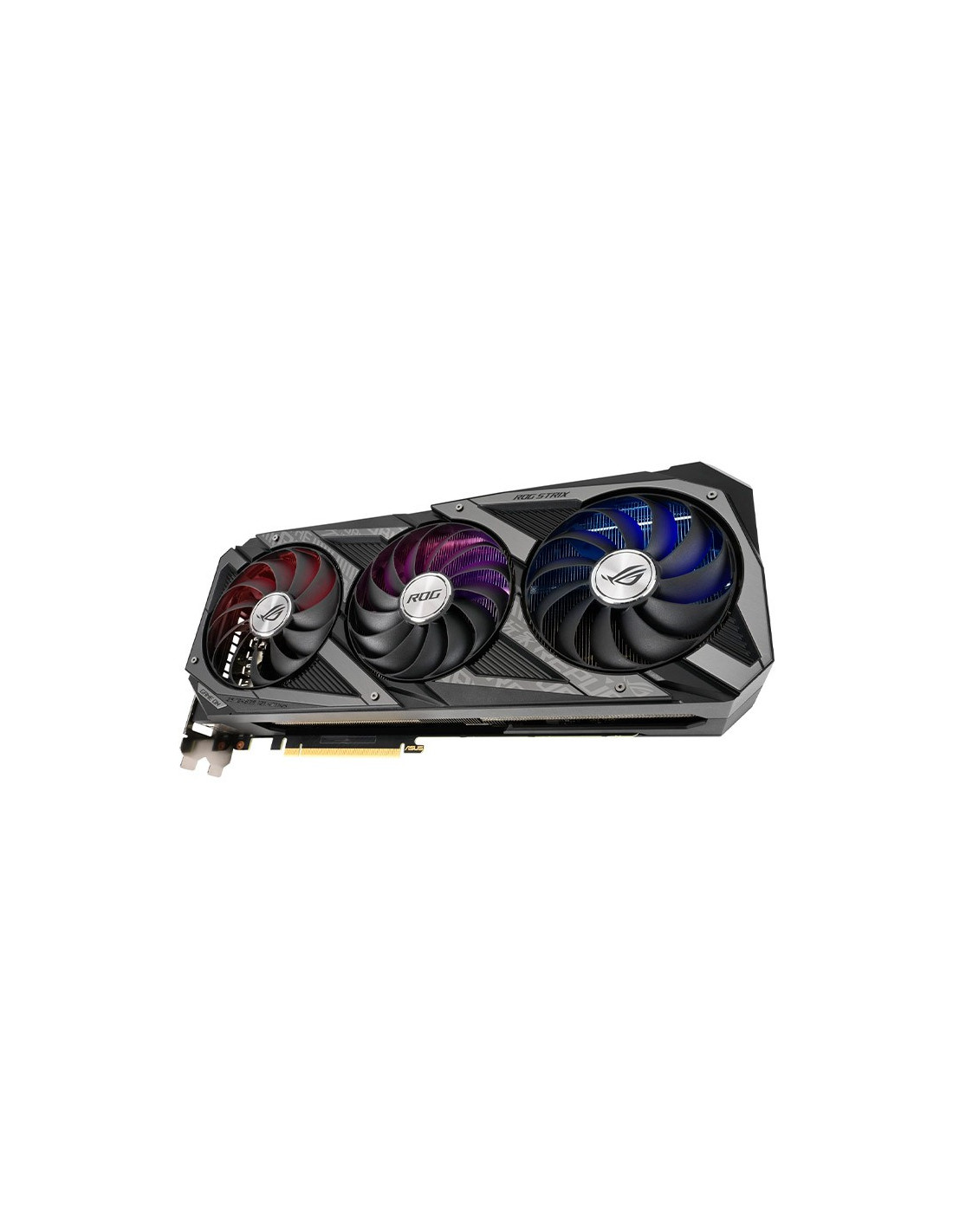




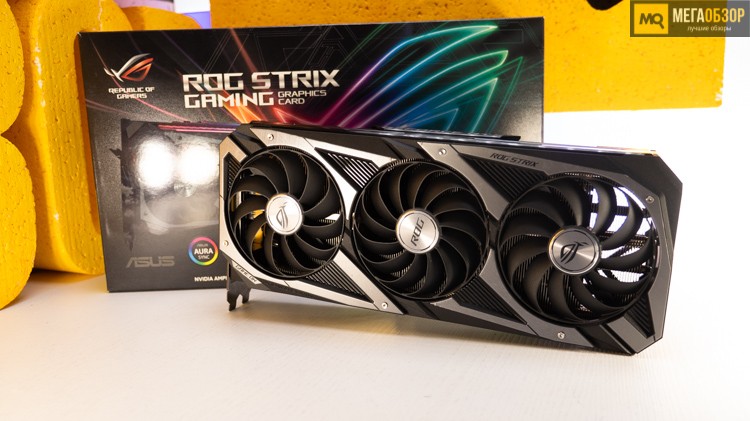






No comments:
Post a Comment
Note: Only a member of this blog may post a comment.